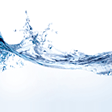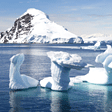- Home >
- Our Actions >
- Ambassador report
4
Comments
WATER POLLUTION IN JURU RIVER, PENANG, MALAYSIA |
|---|
|
Water is always to be the main pioneer concern in the 21st century in every aspect. It is a vital resource that becomes increasingly polluted and scarce throughout the nation. In the worse scenario, many countries are expected to go to war over the demand use of domestic water. Once Malaysia is well endowed with myriad of water resources, but today with the improper management, abuse, general apathy and other human intervention reasons, water has completely become a crisis that caused untold hardships to the country?s growth as well as the people. And among the biggest water pollution in the country is Juru River, located in Province Wellesley.
Juru River is located about 12 kilometres South-East of Butterworth. The calculated length of Juru River was of about 7.95 kilometres from the downstream, flowing from Bukit Minyak area towards the West till South China Sea. The upstream of Juru River consist of two rivers namely Permatang Rawa River and Rambai Rver. The Juru River also passes through the North-South Highway at 144.9 km, travelling towards Alor Setar from Ipoh.
The Juru River is the salvation for Kuala Sungai Juru where most of the people in Bukit Minyak are fishermen and their livelihoods are very much dependent on fisheries. On top of that, Bukit Minyak area is also well-known for its cockle-breeding industry (industrialisation). Before the industrial developments, the condition of the Juru River was not affected by any form of pollution and its water was crystal clear. However, from 1970 onwards, the environmental landscape has changed due to the industrial and housing developments as well as human settlements began to take place along the river banks of Juru River.
Juru River Water Management in Comparing with other Nationwide Rivers The importance of water to mankind cannot be stressed often enough. Despite of that, it is the single most abused and ill-treated resource on the Earth. River water has been widely depleted, wasted, polluted and changed beyond what is clearly recognisable as water. Unlike the past when water was plentiful and populations scarce, but now water is becoming a rare commodity in many parts of the world, including Malaysia due to river pollution and for instance Juru River, in Penang. Based on the 8th Malaysian Plan (2000-2005)[1] report, 13 rivers in Malaysia were categorised under critical level of pollution while another 75 rivers were in moderate level pollution and only 32 rivers were still remained clean. Among the states that experienced the greatest impact of river pollutions were Penang, Selangor and Johor. Statistics[2] showed the number of unpolluted rivers increased in the five years period of time from 12 critically polluted rivers, 34 rivers of moderate level of pollution and 74 rivers that were categorised as clean in year 2000. To name a few of the critically polluted rivers include Juru River, Dondang River and Jejawi River in Penang Kempas River, Tukang Batu River, Rembah River, Benut River and Pasir Gudang River in Johor Sepang River, Klang River and Buloh River in Selangor. Moreover, about 70% of the nationwide river pollutions happened greatly due to the domestic garbage and waste products from industries and homes. In the early 1970s, The Penang State Government has begun to pursue industrialization programs and through the Penang Development Corporation (PDC), it earmarked a large track of land in Province Wellesley along the northern side of Juru River. After years of development, it is now the largest industrial corridor of the northern region. It has then become the main centre of workplace with numerous of employments and housing urbanisation. The increased in population along with the rapid pace of industrialisation has brought along the drawbacks to the river pollution in Juru River. The rapid housing development at the upstream of Juru River, which used to be a flood-prone areas but now became residential hotspots of Bukit Mertajam comprising of many housing estates that further provoked the stage of river pollution which occurred at a much faster rate than the measures taken to counter it. The Juru River flows through largely urbanized areas and is grossly polluted by domestic wastes and discharges from pig farms. As a result, the river carrying highly polluting organic materials, and these wastes is also highly contaminated with heavy metals. To ascertain the extent of heavy metal pollution in the river, total and non-residual concentrations of Copper, Plumbum, Zinc, and Ferum in sediment samples were being collected along the river and undergone several researches carried out by experts. A study carried out by the researchers from University Science Malaysia[3] on the water quality assessment located on the North West coast of peninsular Malaysia, in the state of Penang and within a coastal mudflat in the Juru and Bukit Tambun district. The sites are located adjacent to industrial areas which were reclaimed from mangrove. The types of industry presently in operation include: electronics textiles basic and fabricated metal products food processing and canning processing of agricultural products feed mills chemical plants rubber based industry timber based wood products paper products and printing works and transport equipment. Other main activities that are operating in the vicinity of the cultured area are ships' harbour with petroleum unloading. And the three main rivers are flowing into the area, include Juru River, Semilang River and Jejawi River where most fishing villages are situated. The results indicated that both the total and non-residual metal concentrations in sediments can successfully be used to identify heavy metal pollution sources. The speciation of Zinc and Ferum in the sediment samples were investigated using a sequential leaching technique which identifies the elements among six operationally defined host fractions: (1) exchangeable, (2) carbonate and surface-associated, (3) easily reducible, (4) moderately reducible, (5) bound to organic matter and sulphides and (6) residual. The results indicated that Zinc is mainly associated with the reducible fractions. Zinc and Ferum found in the moderately reducible fraction are significantly correlated, indicating that iron oxides are the preferred host phase by Zinc. This explains, the content of the water is very much polluted by chemical concentrations exerted by the nearby industrial activities. Based on another scientific report by DANCED[4], the electro-plating, pulp and paper, textiles, food and beverages and auto-workshops industries were closely linked to industrial pollution in the Province Wellesley industrial area. This is in line with the report conducted by Department of Environment[5] (DOE) that the four predominant industries of Penang are electronics and electrical, textiles, fabricated metal products, plastic and plastic products. Other industries include paper and paper products, printing works, rubber based, chemical fertilizers and basic metal industries. Illegal mud-dumping activities of industrial waste could be another reason for causing the river pollution in Juru River.
Assessing Water Quality and Development Plan in Juru River InfoWorks RS[6] has been employed by the state government to develop a water quality model for the Juru River in Penang. The aim of the study was to define pollution levels in the river system and also to assess the impact of tides on pollution levels in Juru River. The total population of the Juru River basin is around 362400, and the area is mainly home to industrial, residential and commercial activities. The Juru River system is categorised as one of the most polluted river in the country, it reaches falling of the Malaysian Department of Environment?s water quality index, which looks at the traditional parameters of Ammonia Nitrogen, Biochemical Oxygen Demand (BOD), Dissolved Oxygen (DO), Total Suspended Solids (TSS) and pH. The Juru River is tremendously polluted – in colour it is either black from pollutants such as heavy metals which actually it is from the untreated industrial and domestic wastes, or green – a sign of eutrophication (growth of algae) caused by untreated wastewater discharges in the river. The project involved of all data collection for instance, water quality samples are taken to be input into model for calibration. There are mainly three stages of the project include the (1) calibration of the hydrodynamic and water quality elements of the model, with river level and pollution data are collected respectively, and the subsequent (2) analysis of the results which is still in its early stages. At the sampling locations, (3) river water samples were taken every three hours for three days, with 28 further samples taken at various locations to represent the overall catchment contribution. The modelling of using the InfoWorks RS to study the behaviour of pollution in tidal areas has proved the value. With the information obtained by the model used, it will now make to be possible to move on to find a strategic and commercialise method for solving the river pollution problem that occurring in the Juru River for the past decades. Nevertheless, the Local Council of Province Wellesley (MPSJ) is still relying and adopting the Draft Local Plan[7] for Bukit Mertajam 2010 for planning guidelines and land usage for lands long the Juru River. Many green initiative activities have been carried out by the state government as well as the non-governmental organisations (NGOs) in Juru River to improve the river pollution. One of the most interesting projects is the E.M. Mud[8] balls program (E.M.-Effective Microorganisms). The EM Mud balls are useful as one of the environmental solutions towards reducing water pollutants and thus improving water quality in our rivers and drains. The fermentation emitted from the mud balls will alleviate and destroy the Ammonia Nitrogen found in human effluents and sewerage leakages into the water system. Apart from mud balls project mitigation plan, eco-camp park, river rehabilitation by MRCB, regular water health check[9] and many more activities have been working collectively in Juru River in the recent years. Through such activities, it has certainly help to recover the water quality cleanliness and the beauty of the Juru River like what we once had before. Indeed, proudly to say that Juru River water quality has improved and Juru River is now out of the polluted list under the Environment Quality Report 2008[10] prepared by the Department of Environment but anyhow there are still rooms for improvements for Juru River.
Conclusion – Our River Our Responsibility River management is regarded as a complex task and early planning is much needed to ensure that our beloved rivers are kept free from any form of pollution. Just by citing a good example, our nation?s neighbour - Singapore, which succeeded in cleaning up its rivers many years back after a deliberation of meticulous planning and enforcement that their rivers are now natural assets and provide recreation for tourists and its local peoples. Keeping a river clean not only require to stop all the water sources of pollution but also about maintaining the good quality of water all time round. Rivers provide a balance in the eco-system for wildlife and human beings. It will be heartless to start a trust fund to protect and regenerate all the rivers that run through the country because they should be part of any modern city?s landscape. When the public treats their rivers like drain and rubbish disposal channels, it is not surprising that there are polluted and germ-ridden. And as a result of these, the people are suffering from the pain of our own omission towards the river that we care less about. Generally, the public reactions and feedback on the importance enforcement of river conservation is still lacking. I humbly urge the Malaysian Department of Environment to come out with a more effective enforcement measures that able to curb public environmental problems especially when water is concerned. At the same time, when news about which releases toxic waste directly into drains which later slowly it flows into the river are at alarmed, how many culprits have really been nabbed and charged in the criminal court? That simply throws another big question to our enforcement authorities to take extra precaution on the arising matter to reduce national river pollutions. Next, guidelines and supervisions of food courts and workshops by local council should be stern in their actions when comes to license issuance to food outlets. Conducting periodical checkups on these food stores are essential to ensure that their outlets equipped with grease trap whereby many outlets actually do not comply with these guidelines. As a matter of fact, the waste with oil pollutants is being released into the drains and eventually these evil pollutants will jeopardise our rivers. In addition, Indah Water Konsortium (IWK)[11] plays a vital role in sewerage system. It is common knowledge that sewerage waters are leaking into the drain system and still a major source of river pollution in the country. The solution is straightforward by creating a buffer between the river and housing estates. No house should be built along river banks and there should be a river reserve of adequate distance between the houses and the river. There should be heavy penalties for any errant violations as well. The question of illegal sewerage should not arise if housing projects are required to provide proper sewerage systems before a project is approved. Road drainage should be properly connected also to provide a proper system that prevents untreated water being channelled into rivers. Apart from that, both state and federal governments need to work collaboratively and provide the funding for cleaning up the rivers in the country. It has been a neglected priority for times but it is not too late to kick a start for protecting and rejuvenating our rivers in the country. Polluted rivers and seas are a physical curse and an eyesore to anyone who has visited the place and it will definitely create an embarrassment to the foreign tourists that visit our country. Hence, cleaning up and sustaining our rivers is a worthwhile pursuit for the public. The government should take the lead to care about the significance of our rivers. Every one of us plays an equal crucial role in preserving our rivers. Our rivers, our responsibilities. "Treat the earth well. It was not given to you by your parents it was loaned to you by your children. We do not inherit the earth from our ancestors we borrow it from our children" References: [1] Government of Malaysia (2005) Eighth Malaysian Plan 2000 - 2005. Government of Malaysia, Kuala Lumpur [2] Zulkifli Abdul Rahman. (2000). Water Quality Management in Malaysia. Malaysia, Jabatan Alam Sekitar (JAS) [3]Abbas F. M. Alkarkhi. (2008). Comparing Discriminant Analysis and Logistic Regression Model as a Statistical Assessment Tools of Arsenic and Heavy Metal Contents in Cockles. In Journal of Sustainable Development. Volume 1, (2)
[4] DANCED. (1998). Penang Coastal Profile - Integrated Coastal Zone Management Project Report. Malaysia, Kerajaan Negeri Pulau Pinang. [5] Department of Environment, DOE. (1999). DOE Annual Report. Malaysia, Ministry of Sc, Tech & Innovation MOSTI [6] Norbaya Hashim, (2008) Assessing Water Quality in Malaysia. In Water and Wastewater Asia Journal. [7] The development plans along Sungai Juru. (n.d.) Retrieved from http://www.sungaijuru.com/v2/info-on-sungai-juru/ [8]EM mud Balls (2009, Nov 16) Retrieved from http://www.hotfrog.com.my/Companies/EM-Mud-Balls-Malaysia/EM-Mud-Balls-4947 [9]Sungai Juru Activities (n.d.) Retrieved from http://www.sungaijuru.com/v2/category/activities/ [10] Sungai Juru is out of polluted river list (2009, Nov 11) Retrieved from http://www.sungaijuru.com/v2/ [11] Sewerage Facts (n.d.) Retrieved from http://www.iwk.com.my/f-sewerage-fact.htm
|
|
|










 Previous : Air Pollution in USA, Facts an...
Previous : Air Pollution in USA, Facts an...









4 Comments
Wow, this is really, 'awesomely' well-organized article! Thank you for this informative article, Chuck! :D Thumbs up for you! E.M. Mud balls program, I studied it also. Really interesting one. I feel so glad it worked out for the river.
Posted 21-03-2014 14:00
Thanks for the detailed report Ng Chuck . As you rightly mentioned existence and water quality of this river is important for livelihood of fishermen etc. Glad to know the efforts being put in by state govt and NGOs but more stricter measure need to be implemented to penalise those who are polluting river .
Posted 21-03-2014 02:46
wow thanks for post this awesome article
Posted 20-03-2014 23:59
This is a very detailed report. *thumbs up*
I hope measurers are put in place to save this river and the flora and fauna that depend on it soon enough.
Posted 20-03-2014 14:45